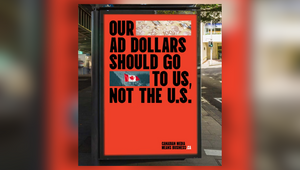
Reaching the Regions

In recent years we have seen advancements in diversity and representation within advertising more than ever before. There is no question as to whether creative agencies and the brands they work with are looking more at how they include all communities in society. Of course there have been misfires and there is still a lot of work to do, but ultimately both conversations and actions are happening, and for most this all feels like progress. I don’t see the same advancement when it comes to regional representation within UK brand marketing though. We are still very (very very) London centric, and yet we seem to have just accepted this without much fight, in the same way accept prawn cocktail crisps.
There are two things I am passionate about. 1) Prawn cocktail not being a legitimate flavour of crisp and 2) There is so much more opportunity to connect with people when you think past London.
I know it’s not easy to crack. Creative agencies are often restricted by limited budgets and briefs, demanding that they convince millennials across the whole of the UK to buy a specific type of yoghurt. These brands are often reliant upon one hero piece of content which, despite being hacked into different ad formats and hurled at the internet, isn’t nearly heroic enough to appeal to everyone.
But that doesn’t mean we shouldn’t at least try to crack it. Research shows that nearly half (48%) of those living outside London think the ad industry simply doesn’t understand them. And more than half (56%) of them feel that ad land’s representations of the UK outside the capital just aren’t authentic.
So how do we crack it? Well of course one way is the opportunity we currently have to diversify our talent pool in the way we work post covid. Hybrid working could hopefully give the industry a range of talent from outside of London. The perfect storm of high cost of living in London (and now getting higher), a notoriously competitive industry and often low (or even unpaid) starting salaries mean that working in the industry and living in London is only accessible for a few. Think of all the talent and insight we have missed out on over the years because we have centred everything around London purely because that is where our offices are. The great war on WFH (as I’m sure we’ll look back on it as) is a huge chance to diversify the talent we welcome into the industry and in turn create connections to regional communities through the campaigns we create.
But this still doesn’t solve the problem of how a brand can truly connect with everyone through just one campaign.
Enter Sky’s biggest ever product launch with Sky Glass, where according to marketing director Sunny Bhurji, the big hitter was its use of influencer marketing (something they have stated will now continue to be an integral part of all Sky’s promotional plans going forward).
The numbers were big - 182 influencers meant a combined 97 million followers on Instagram and YouTube, it generated some 300,000 clicks to the Sky landing page where they could learn more about the product. More importantly they were able to use the different influencers to explain the value of the product to different audiences: the young family, the working professional, the sports fanatic.
So if using different influencers to target different types of consumer is successful then why not apply it to geographic regions? Could taking the essence of a centralised creative idea and pushing it through an influencer filter, removing the overgeneralisation, injecting local nuance, tacit understanding, and a hint of regional razzle dazzle be the answer to greater regional resonance and representation?
Absolutely.
Influencers, creators, and of course Love Islanders, built their following by entertaining audiences in ways that most brands can’t. They’re out there, in the real world and outside of London, seeing what works and what doesn’t, connecting and communicating with real people. In their millions consumers follow, they scroll, they comment and they even slide into DMs to find out what influencers buy and where they shop. Influencer power isn’t going anywhere.
Does this mean the end of traditional creative? Not necessarily. The value in an idea is one that harnesses the relevance of influencers across multiple regions. It’s in its ability to be diffused and expressed in multiple ways without losing its essence. Can all creatives relinquish that kind of control? Probably not. Can all influencers take that same essence of an idea and translate it for their audience in a way that still feels native to their normal content? Also, nope. But creatives working with and through creators could burst the London bubble the industry hasn’t really done anything about and finally create some work that has some real local flavour, like cheese and onion or salt and vinegar.















